
It’s important to always keep looking for ways to live a more sustainable life. Whether that’s using Swedish dishcloths, switching to a bidet or even using an electric lawn mower, there’s always some way to make your daily routine a bit more eco-friendly.
One area where it’s easy to reduce your impact is at the kitchen sink. Washing dishes not only creates plastic trash from all the soap bottles you use, but things like water usage, microplastics in your sponge and even the ingredients in your dish soap can affect the environment. That’s why we reached out to some experts to get the lowdown on how you can switch up your routine and wash dishes in a more sustainable way.
Use a dishwasher and reduce water waste
“There are few household chores that can be done without creating waste and dishwashing is no exception,” says Alex Wojenski, cleaning guide at Grove Collaborative. “Both hand-washing dishes and using a dishwasher create water waste. Water requires energy to get it into our homes, to heat and to decontaminate once used. Using more leads to the need to create more which in turn destabilizes water availability over time.”
Jim Hutchison, senior associate vice president of the department of chemistry and biochemistry at University of Oregon and co-founder of Defunkify, says dishwashers are preferred, but it depends on how much you’re actually washing. “If you are running full loads in a very efficient dishwasher, you might be using the least amount of water,” says Hutchison. “However, if you are washing just a few dishes, hand-washing can compete.” According to the United States Geological Survey (USGS), washing your dishes by hand can use between 9 and 27 gallons of water, depending on how efficient you are, compared to a new Energy Star dishwasher, which can use 6 gallons or less. So if you have a new dishwasher, the best way to save water is to pack it full and use it.
If you don’t have a dishwasher or need to wash those pesky items that aren’t dishwasher-safe, Hutchison has a few tips for washing dishes by hand. He says the big key is to use the least amount of water possible. “The best hand-washing strategy is to make a small amount of soapy water, wash all the dishes and then finally rinse all the dishes,” he says. “Whether dishwasher or hand-washing, scraping and washing dishes right after using them will typically allow you to use less soap and water to clean them.”
Wojenski echoes these suggestions, but warns about rinsing dishes before loading them into the machine. “Rinsing dishes before loading the dishwasher can do more harm than good,” she says. “While scraping off any large chunks of food is necessary as to not clog the dishwasher, they are designed to tackle food residue and actually have built-in sensors to assess how much cleaning power is needed, and if dishes are rinsed prior to loading, the dishwasher will not be effective and may return dishes that are not cleaned effectively.”
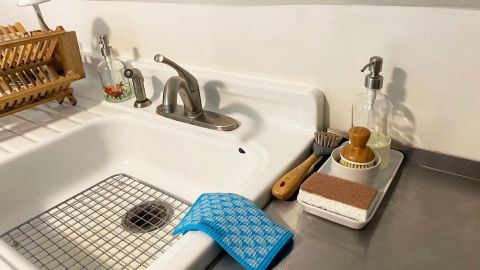
When washing by hand, Wojenski recommends using a sink bath to save the largest amount of water possible. “Fill the sink with warm water and a squirt of dish soap until it is sudsy and then submerge dishes,” she says. “Pull them out one at a time and then rinse in hot water either in the other side of the sink or in a bucket. For this method, it is best to wash from lightly to heavily used so that the residue from dirtier dishes will not contaminate the cleaner ones.”
Hutchison says another problem with the dishwashing process is that the soap you use can be discharged into the environment. “Not all soaps are created equal,” he says. “There is often a balance of efficacy, environmental impact and cost.” In fact, there are tons of ingredients in traditional dish soap that are not only harmful to the environment, but can also be dangerous for humans.
To avoid these harmful ingredients, Wojenski says it’s important to do your research and figure out what’s inside the soap you use. “Third-party certifications and verifications can be used to back up environmentally friendly claims,” she says. “Truly green companies and products will be transparent about how they are accomplishing their claims and will have information available to express this.” Some third-party certifications that can help you find the safest products are EPA Safer Choice and the Environmental Working Group (EWG) Verification. Check out the EPA Safer Choice list for dish soaps and the list of options that have received an EWG Verification.
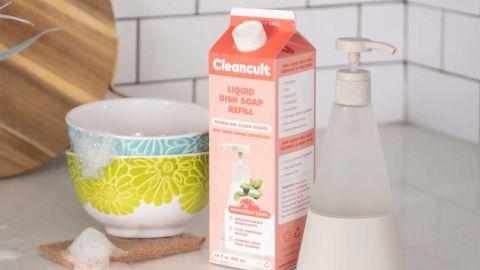
Once you’ve chosen your dish soap, it’s also critical to only apply as much as you need so it lasts as long as possible. “In most cases, more dish soap will dispense than is needed and ends up being lost down the drain,” says Wojenski. “Making a conscious effort to apply a small amount of soap at a time will extend how long a bottle will last. I like to only reapply soap when there are no more suds.”
One ingredient to look out for is polyvinyl alcohol (PVA or PVOH). This material is actually a thin, dissolvable plastic that many detergent pods for both dishwashers and laundry machines are made of. There’s a bit of mixed research on the sustainability of these films, as past studies have shown that PVAs biodegrade by 60% in the first 28 days, but one study found that among three different common PVAs tested, the biodegradability was negligible.
After you sort out your water and soap, another thing you should pay attention to is the materials your dish-washing tools are made of and the packaging they come in. After all, those plastic bottles can really start piling up in the trash when you’re using traditional soap. That’s why it’s important to search out products that have little to no plastic packaging so you can recycle or compost your waste.
“Look for products that are packaged in easily recyclable materials such as paper and aluminum versus single-use plastic,” says Wojenski. “When possible, also look for products and packaging that can be composted after use.” The biggest area where you can make this swap is with your soap. After diving into the ingredients, look to see if the soap you’re interested in comes in low-waste packaging. Many brands such as Blueland, Dropps and Cleancult sell glass containers and soap refills that come in recyclable or compostable packaging.
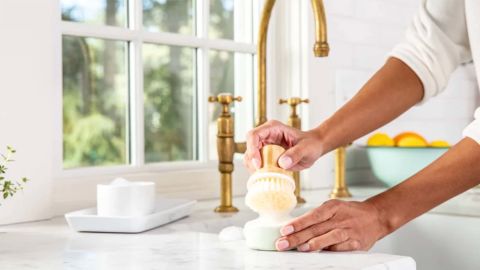
Another huge product you should swap out is your sponge. “Standard household sponges are made of a polyurethane foam which relies on hydrocarbons during the manufacturing process,” Wojenski says. “Most dish soaps, brushes, scrubbers and other dish-cleaning accessories also come in or are made of single-use plastic, which has a recycle rate of under 9%.” Sponges also release microplastics into your water after every use, and since experts recommend swapping them out every week due to bacteria, that means even more plastic in our landfills. Opting for a zero-waste option like a compostable dish brush is our favorite way to skip the sponge.
“Additionally, taking care of our products can make them more effective and last longer,” says Wojenski. “Allowing dishwashing accessories to dry out between uses deters bacteria buildup. Sanitizing sponges frequently — just wet the sponge and place it in the microwave for two minutes — will make sure that we are using clean tools.”
$16.99 at AspenClean or $17.99 at Amazon
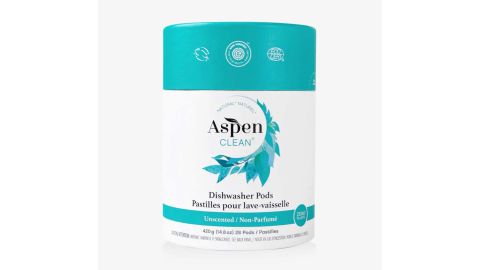
These EWG-Verified dishwasher pods come in plastic-free packaging and are made with vegan, plant-based ingredients.
$45.98 at Defunkify
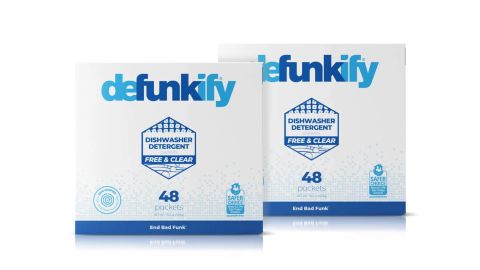
Another EWG-Verified option, this detergent from Defunkify also comes in plastic-free packaging. Check out EWG’s full breakdown of its ingredients here.
From $25 at Dropps
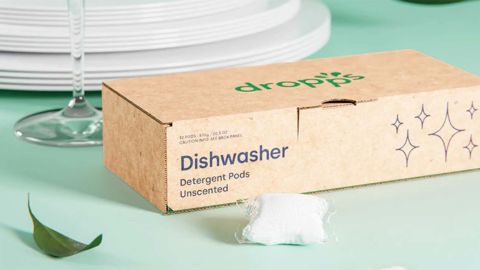
Dropps’ dishwasher pods come in three scents and feature clean and effective ingredients. Plus, the plastic-free box they ships in has a built-in child lock so it can easily double as storage.
From $19.14 at Amazon
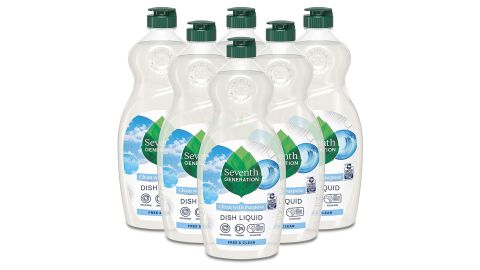
If you’re washing by hand, check out Seventh Generation’s dish soap, which is EPA Safer Choice Certified, has a powerful plant-based formula and comes in a bottle made from 100% recycled plastic.
$12.49 at Cleancult
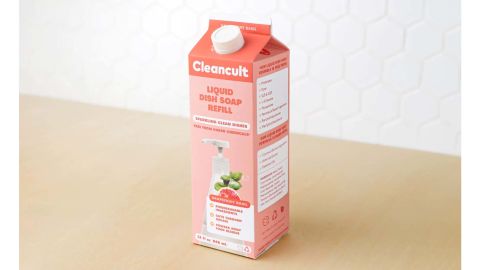
If you have a soap bottle already, stop buying new ones and just refill it with a soap refill like this one from Cleancult. Cleancult uses coconut-based formulas for a powerful clean and the carton the refill is sent in is 100% recyclable.
$9.99 at Grove Collaborative
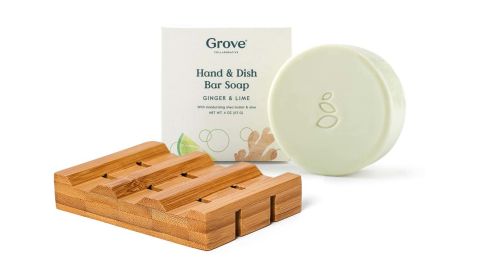
“Using a dish soap bar is another great sustainable dish-washing swap, as it is easier to manage the amount of soap with each use,” says Wojenski. This bar from Grove comes with a little bamboo stand to help your soap last as long as possible.
$13.99 at Amazon
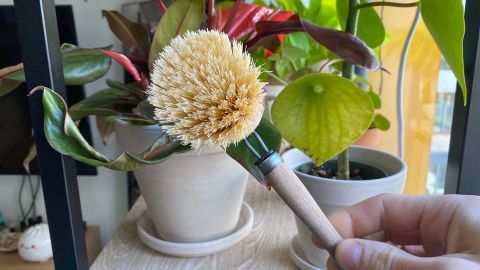
Swap out your sponge for this compostable dish brush. It’s made from beechwood and tampico fibers so it can be composted at the end of its life. Plus, the brush head is interchangeable, so you can buy replacements instead of an all new brush every time. Check out our full review on this plastic-saving brush here.
$15.99 at Amazon
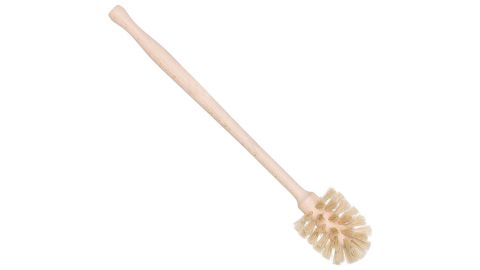
Bottles can be a pain to clean, but this compostable bottle brush makes it easy. The flexible fibers can fit into most bottle openings (though probably not super-skinny ones) and the long handle makes it easy to scrub out any gunk.
$15 at Package Free
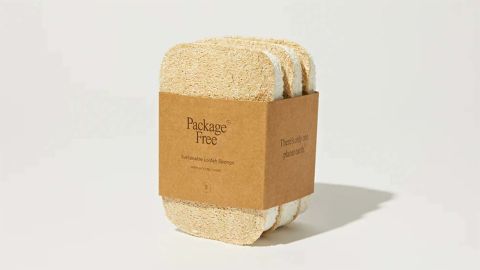
If you like the feel of a traditional sponge, opt for this one instead; it’s made from 100% natural cellulose.
$15.99 at Grove Collaborative
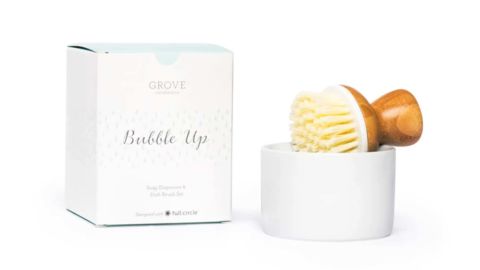
“There is no need to leave the faucet on when using the Bubble Up Dish Soap Dispenser,” says Wojenski. “It creates soapy water and uses extra-soft bristles to do the tough work so that all that is needed is a quick rinse with hot water.”
$9.99 at Oxo
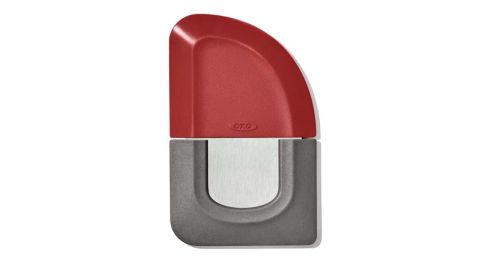
For tough, stuck-on food, we absolutely love this scraper from Oxo. It has three different materials with varying toughnesses so you can safely scrape anything from delicate nonstick pans to cast iron and grills.
$7 at Package Free
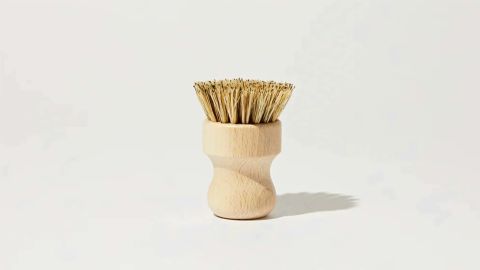
This dish brush has tough bristles to help you scrub up leftover bits of food on pots and pans. Made from beechwood, coconut fiber and palmyra fiber, it’s completely compostable at the end of its life.
$7.99 at Grove Collaborative
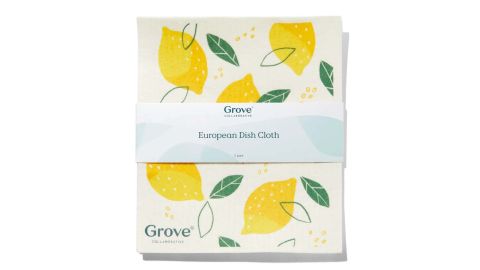
“A European dish cloth is a dish-washing and kitchen staple in my household, it is great at holding water and can make wiping down dishes a breeze,” says Wojenski. “It is also made from biodegradable cellulose and cotton and can be composted in an industrial facility once it is beyond use. I personally like to keep mine for bathroom cleaning once they no longer have a place in my kitchen before thoroughly cleaning and composting.”
$24.99 From $16.95 at Amazon
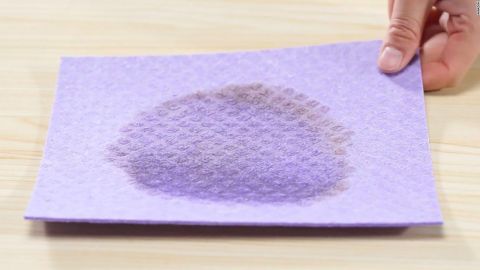
It’s no secret we love reusable cloths too. Our favorites are these Swedish dishcloths, which are often on sale. Check out our full review of the cult-favorite cloths here.
$29.99 $27.99 at Amazon
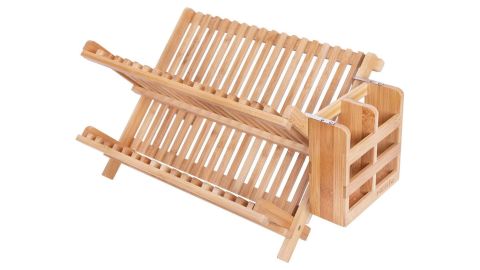
And once all your dishes are washed, you’ll want an easy way to dry them as well. This dish rack has two tiers and a utensil holder so you can pack in all your dishes. Just stick a dish-drying mat underneath and you’re good to go.
